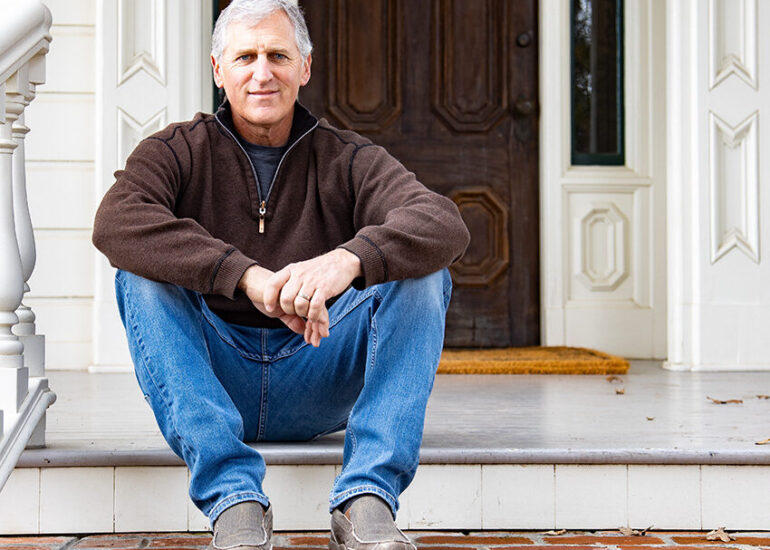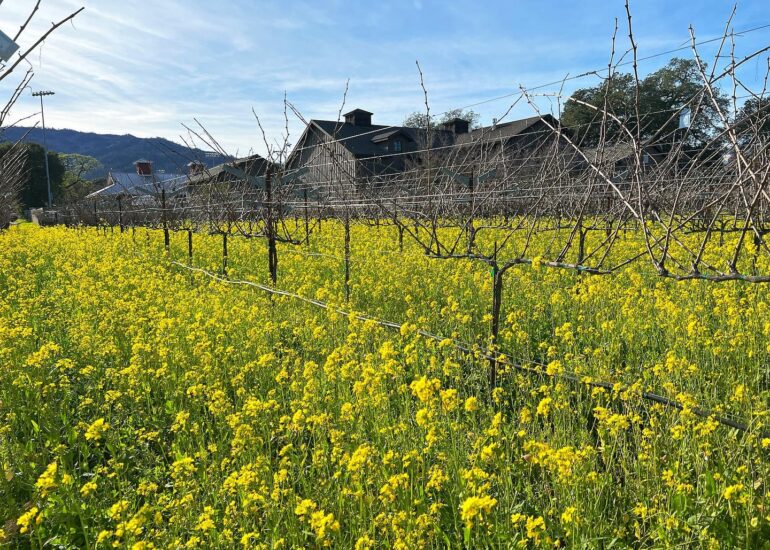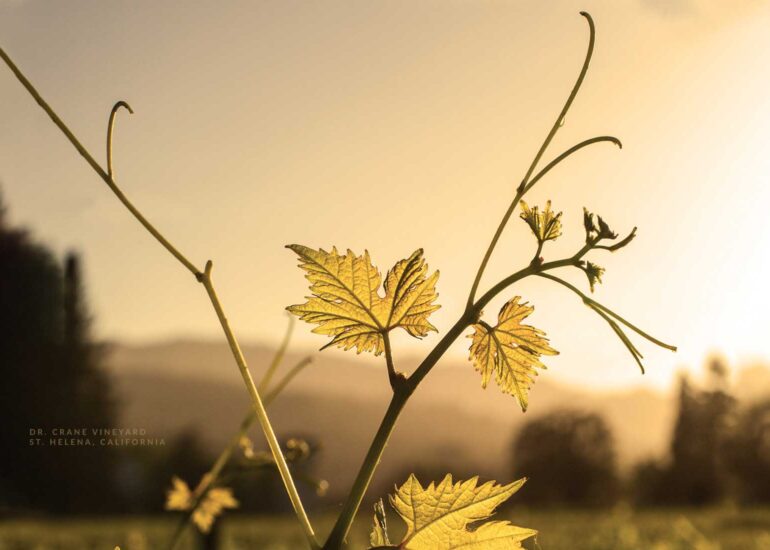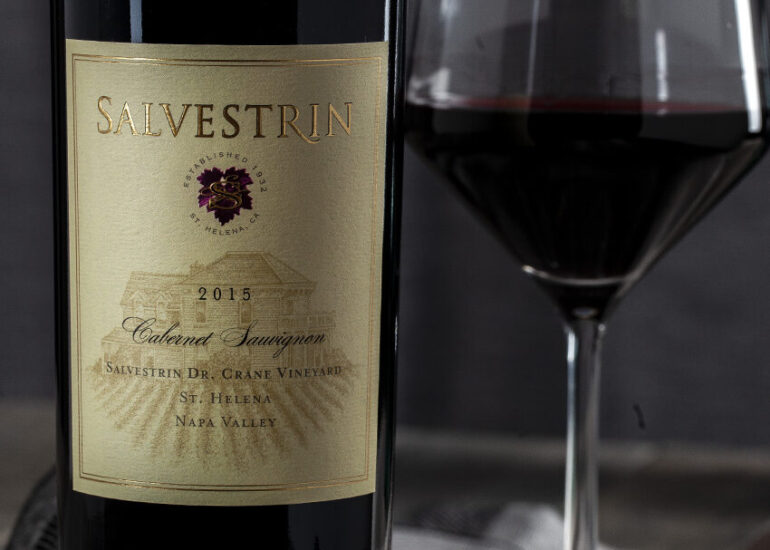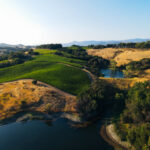Vested Interest
Winemaker Interview
Vested Interest
A conversation with Rich Salvestrin of Salvestrin Winery in Napa Valley's Saint Helena
Family Wine Brand Stays True to its Roots Amidst a Sea Change in Napa
An Interview with the Proprietor Winemaker of Salvestrin Winery
The face of the Napa Valley has changed dramatically over the last generation. During that time, scores of new wineries have been established and the resulting growth in commerce and tourism has been staggering. But in the midst of all this bustle and boom, there persists a number of small, family owned and operated vineyards whose history stretches long before Napa earned a starring role on the world stage of wine. Salvestrin Winery is one such property, having been in the same family for nearly 80 years. After having tasted its current releases at the St. Helena Press Tasting event, I made a mental note to learn more about this regional stalwart. Months later, true to my intention, I sat down with owner, vineyard manager, and winemaker Rich Salvestrin, and listened first hand to him share his experiences at the helm of this seasoned vessel navigating its way through a sea of change.
Salvestrin is uncommon in its commitment to offering the consumer a taste of Napa for prices well below what we’re used to seeing for a great deal of single-vineyard, estate-bottled wines produced in the valley. While much of that stems from the fact that its land has been in their family long before the region’s property values began to soar, the Salvestrins are driven to crafting solid wines to be enjoyed regularly. And as we often hear in the domain of wine production, quality begins in the vineyard. All the more salient, then, is Rich’s fervor in tending the very land that was passed down to him, making him an archetype for the modern gentleman farmer. With wines as charming as his disposition and lucid as his gaze, he has managed to place a very prominent and personal signature in vinifying the very fruits of his labor.
— Nikitas Magel
Following are edited excerpts from the interview. At the bottom of this post is the full recording.
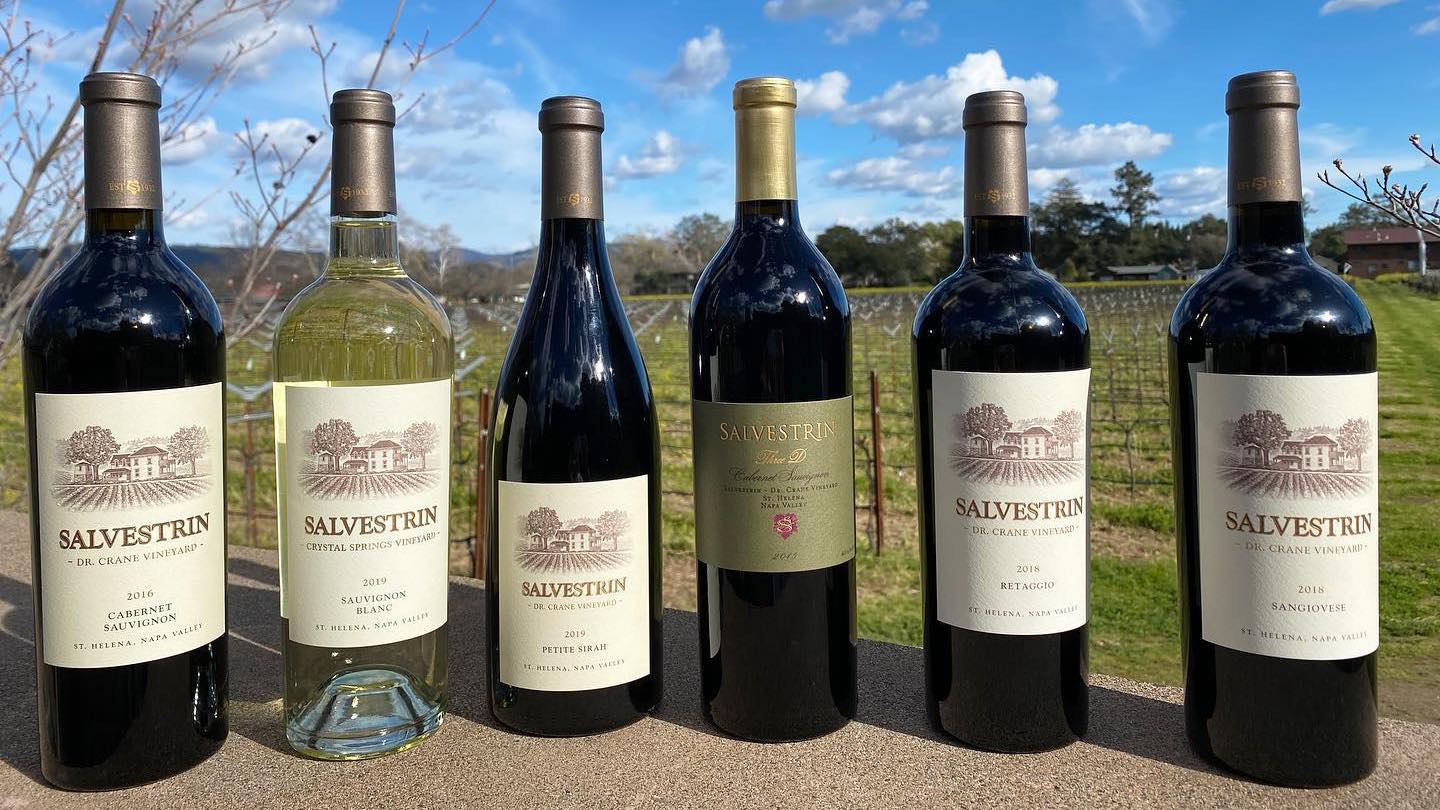
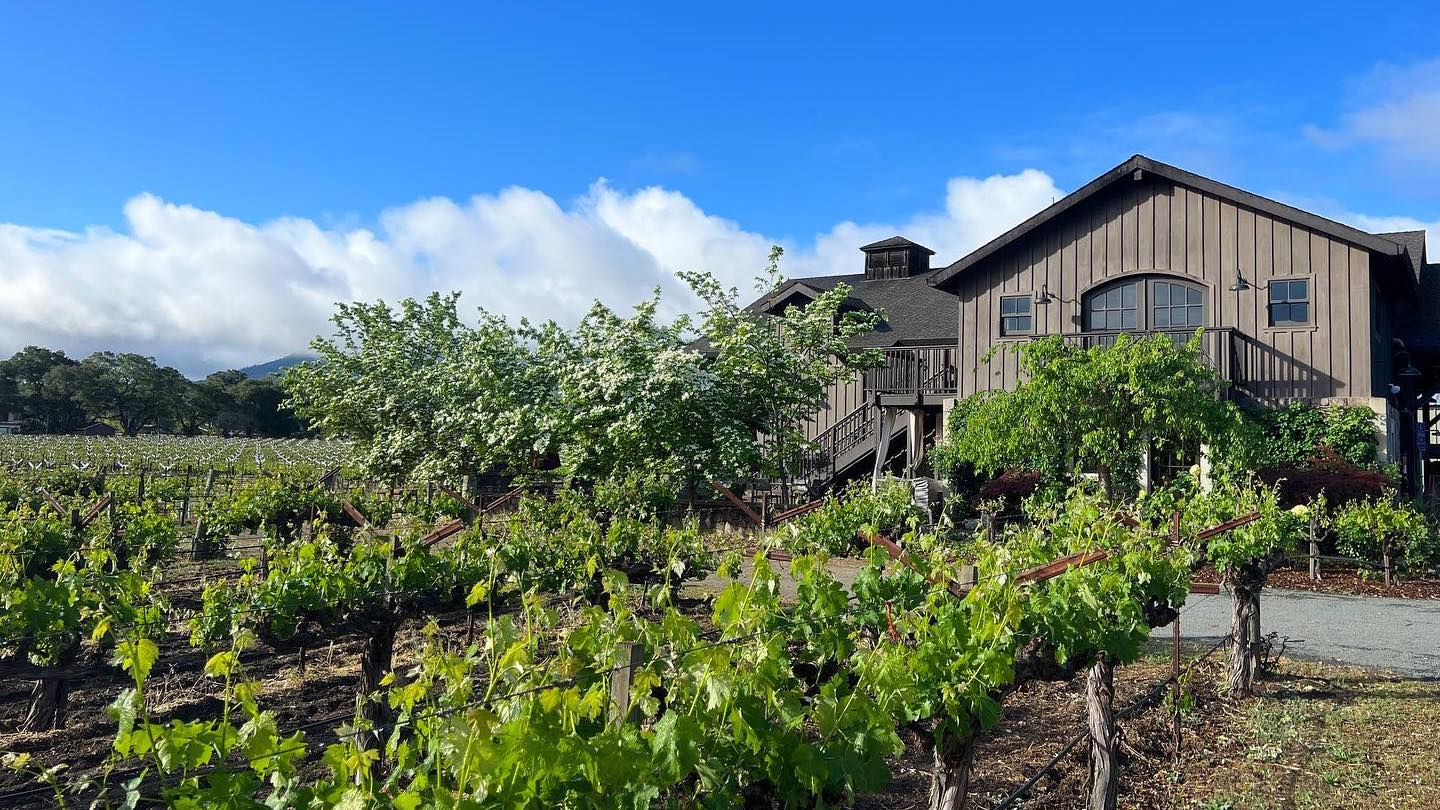
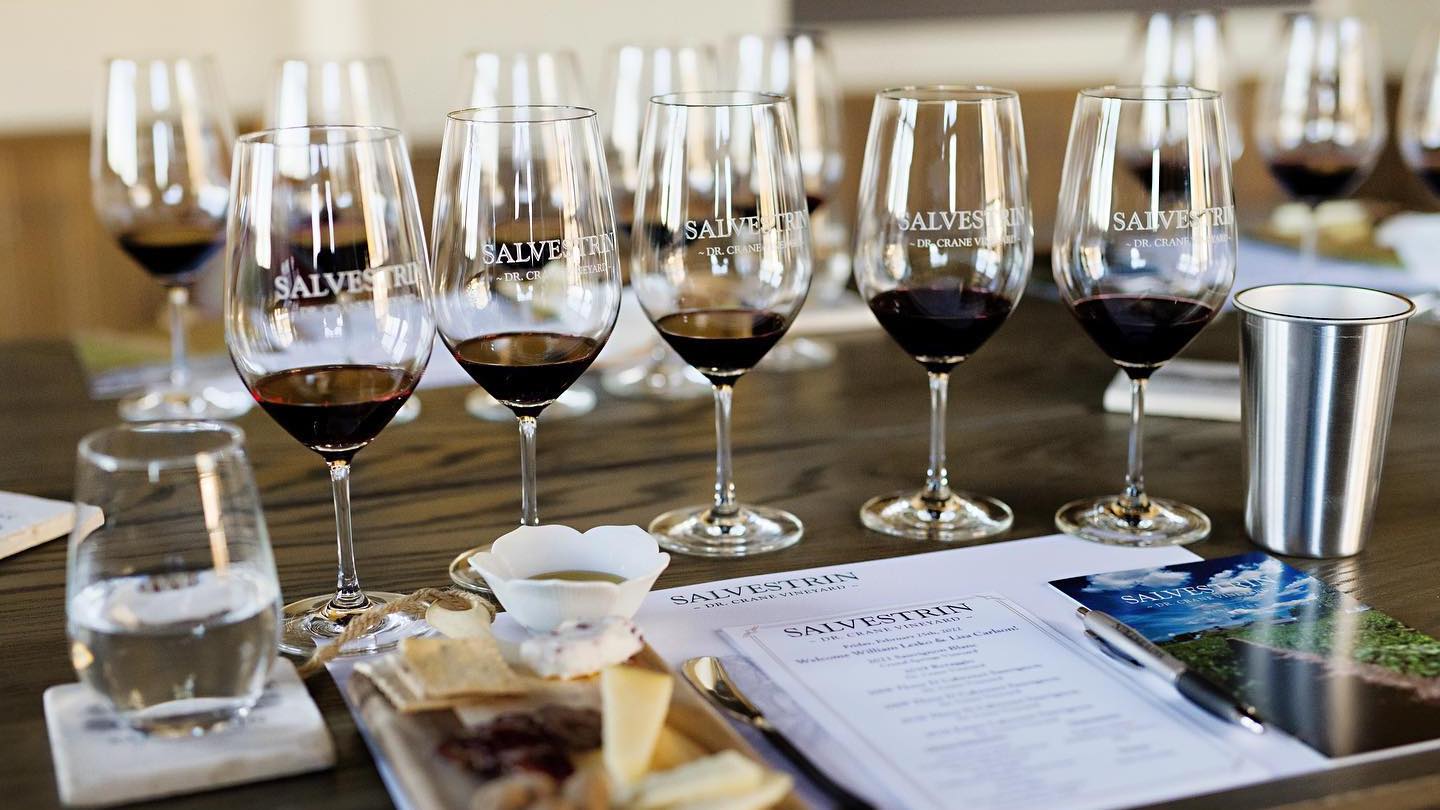
Extending Deep Roots
Nikitas Magel: How would you describe the Salvestrin philosophy? What is Salvestrin all about?
Rich Salvestrin: It’s a winegrowing lifestyle. The Salvestrin family has been living on the property and growing grapes here for 77 years, and what we’ve evolved to processing the fruit that we grow rather than just selling it all (although we still sell some of it). It’s about making wines that tell part of the story of our lifestyle and are enjoyable expressions of what we do on a daily basis. We try to find balance in our lives, we try to find balance in ourselves, and we try to find balance in the wines. So it’s all about balance. We strive to make wines that we can enjoy and that go well with food, and we hope there’s enough fans out there who have a palate similar to ours!
NM: How long have you personally been making wine?
RS: My first commercial vintage was 1994, but it wasn’t something I did on my own. We had been selling grapes to several wineries, one of whom was Rombauer, who bought Cabernet and Merlot from us. We decided that we were going to make a couple of hundred cases of our own wine, so we kept some fruit and crushed it up at Rombauer with the help of winemaker Greg Graham. I learned the ropes, selected some barrels, and got my feet with the whole process of going from grapes to bottle. I mean, we’d made wine here [at Salvestrin] before, for our own use, but 1994 was the first real commercial vintage. But, really, my training is in viticulture — I have an Agricultural Science degree from Fresno State — and I grew up in a vineyard, so my passion and what I was trained to do is grow grapes.

NM: So, the vineyard has been in your family for far longer than you’ve been making wines from it. What changed for you to make that transition — for you to decide to no longer be just a grower but to actually take the fruit you’re growing and make wine that expresses your own identity?
RS: I think it was a combination of things as to why that came about. One part of it was a business decision, long term family planning for the transition of the estate. Another part of it was wanting to see a true expression of the fruit that we grow. There’s a lot of other reasons. But for a family business to stay viable for generations, you’ve got to grow; as the family grows, the business has to, as well. Otherwise, it would have to be sold off so that everybody would get their piece of the pie. Part of any family business is transitioning from generation to generation, and so I recognized that if we’re going to stay here and continue to do what we’re doing, we really had to grow the business. And for us the way to do that was to transition into the winemaking end of things, where you can capture a bigger piece of the pie. Rather than just selling a commodity, you’re selling a product that has added value.
NM: Speaking of value, the prices for your wines are not typical anymore of those produced in the Napa Valley. If you go anywhere else for small production, estate-bottled wines, you’re going to see them being sold for a lot more.
RS: We don’t have a lot of layers to the business. The family owns it. I’m an owner, the winemaker, and the vineyard manager. We are truly owner-operators. So, we not the type of owner where we hire the winemaker and his staff, the vineyard manager and his staff — there’s not all these layers to add to the cost of the bottle. Plus, we have low basis in the land. My grandparents purchased this land in 1932 — I guarantee you it was a lot less expensive then than it is now! {laughter} So, we have lower input costs into the bottle. Why gouge people? And not only that, but these wines are made to be consumed and enjoyed. I know I couldn’t afford to pay $100+ for a bottle of wine and drink a bottle or two a week. Our philosophy is, we enjoy drinking our wines and want other people to enjoy drinking our wines, so we want them to be at a price point where people can afford to do that.
Reflecting an Appellation
NM: Do you find the Salvestrin vineyards are in keeping with the characteristics of the St. Helena appellation as a whole?
RS: I would say yes. One of the things I point to is a tasting we had last Fall: a bunch of us [winemakers] got together and tasted all the open wines, about fifteen Cabernets, left over from the St. Helena Press Tasting. All the wines had a theme — that spice and velvety mouthfeel — but there were seven or eight wines that were extremely similar. I couldn’t tell my own wine from Spottswood from Lewelling from Charnu! There were several wines that were so similar that I thought any one of them could have been ours! There was a theme of flavor profile, spice character, structure, and mouthfeel through all of those wines.
NM: What are the challenges you face in terms of viticulture that are really unique to the St. Helena appellation, which you’re certain your colleagues in other appellations in the Napa Valley are not experiencing?
RS: I would probably answer that question in a different way by saying that here in St. Helena we have the luxury of not having challenges that others do, but rather advantages. And those advantages are that here at Salvestrin, and pretty typically throughout the St. Helena appellation, we’ve got twelve to eighteen inches of topsoil and the further we dig down, the higher the concentration of gravel, cobble, and sand that you’ll find. So that means the soil is extremely well-drained to the point where it rivals what a hillside would give — it’s a challenging environment for the grapes to grow in because it’s restricting the vines for water by early summer. At the same time, we have the efficiency of farming on completely flat ground. We are unique in that the appellation itself has the ability with the soil, location, and warm climate to really get a ripeness level that makes wines to really show the fruit and still be balanced. Ripeness is never an issue. Rather, it’s always a matter of not letting the fruit get too ripe. We’re a very early site to harvest, with ripeness levels that many other growers salivate over and maybe can’t even achieve at all in some locations. In fact, we’re probably one of the earliest ripening sites in this area.

NM: How is early ripening an advantage in the production of your wines in particular?
RS: Well, I would say because we know we can always attain the ripeness level to get the structure we need. Even in a very late year, the challenge would be to get the fruit profile away from any green flavors, plus the acids low enough and pH high enough to where the wine is balanced — in some areas, growers are going until mid November before they’re harvesting their grapes because they have to wait that long before they get the ideal flavor profile and get the acids to a level where it doesn’t have to be aged 25 years before you can drink it. For us, it’s the reverse: we have to work on making sure to keep the crop on the vines long enough that we get the sugar and get the acid to drop, but we have to make sure we keep it on the vine long enough to get the flavor development and yet with a low enough sugar that we don’t too high a level of alcohol [in the finished wine].
NM: And that brings to my next question and concern. Even though, in some ways, it could be advantageous that you experience early ripening, the flip side of that is less hang-time — doesn’t that pose the danger of compromising on tannin ripeness and complex flavor development?
RS: I don’t believe so. I think of the vine as a factory and, over time, it’s going to produce based on the yield that’s on the vine, balanced with the canopy that provides the energy to ripen the fruit. If the vine is in balance, it’s going to take a certain amount of days to deliver nutrients to the fruit to get it to where it needs to be. So, we’ve got sugar content, acid content, the pH of the fruit, and flavor development — all those things have to come together to ripen the fruit. If you’re in a location that’s hard to get the fruit ripe, you’re going to need to leave it out there longer; you have to do that. But as long as the vine is in balance, and you can read the vine and manage it correctly, why would it make a difference how long the fruit is on there if you can attain flavor, acid balance, sugar balance, and pH? In fact, the longer the fruit is left hanging, the more stressful it is for the vine and the longer it takes for the vine to recover. Whereas the sooner the vine is harvested, the sooner you can irrigate and fertilize it, and the sooner it will take up nutrients and store carbohydrates for the next year, keeping the vine healthy.
RS: We also prune a little bit earlier. Some growers prune extremely late — in February or March — and that will delay ripening. We start pruning in January and finish by the end of March. The vines that are pruned in January are going to push bud prior to whatever is pruned in late March — because the longer you delay pruning, the longer you delay bud push. So the number of days to harvest could be within a small range, but if you wait to prune until the extreme end of the season, before the vines begin to grow, you’ll delay bud push and thereby delay the whole growing season.
NM: How much of everything you’ve just described is a function of your own choices as vineyard manager and how much is a function of this specific location or of the greater St. Helena appellation?
RS: Well, I think you make decisions based on the site that you’re on. So, our practices come from our experience growing grapes here and what we’ve learned from that, along with the choices that we make based on what this site and its climate give us. We make management decisions based on what we know about our given site. And what we do here is actually different from what we do four miles away [in the Sauvignon Blanc vineyard]. Every site needs to be looked at in that way. In my opinion! {laughing}
NM: {laughing} Well, basically, it really is about opinion, to a large extent, right?
RS: Yes, absolutely! And there’s so many different variables and so many different things you can do — from vine density to trellising to irrigation to cover crop to canopy management — and then you’ve got the weather, which you can’t control. But you have to know your site well enough to understand what given climate conditions in one year will mean to your vineyard and the resulting fruit that’s produced from it, and how you manage through it.
Managing the Canopy
NM: Speaking of vineyard management, you’re a big proponent of holistic and preventive practices in vine maintenance. For example, you mentioned that you maintain a two-shoot-per-cane maximum in an effort to control canopy growth. Can you say more about that and why it’s important?
RS: Going through the vineyard, we identify the two main shoots that we want to keep, which have clusters. Other shoots that are growing also have clusters, which [if they were allowed to mature] would make the crop load too big, the yield too high. So we want to thin all that out, opening up the canopy. We want an nice open area throughout the vines. Otherwise, if all the other shoots were allowed to remain, all the space would be filled in with leaf area and more shoots. In that case, we wouldn’t have as much sunlight and airflow penetrating, producing a dense type of canopy that would then retain humidity coming off the ground or from the air, keeping things moist and dark, and ultimately encouraging mildew growth and harboring more insects. So, thinning out the canopy is a cultural way to reduce the pressure of disease and insects, without having to use chemicals. Plus it’s also yield control, at the same time.
NM: What you’re suggesting, then, is that by virtue of the choices you’re making in pruning, you’re preemptively reducing the need to apply pesticides later on.
RS: Yes. Specific procedures in canopy management will help you drastically reduce the need for pesticide application. It’s part of an Integrated Pest Management (IPM) program. Another part of that comes later on when, after we’ve removed some shoots, we remove leaves around the clusters after they bloom and the berries have set. We’ll remove the leaves right around the clusters that are creating this microclimate around them, encouraging mildew to form…

NM: …because of the shading and the lack of air circulation, which becomes more crucial as the berries’ viability increases…
RS: …and as the canopy gets bigger, because you’ll get bigger and more numerous leaves. Here’s why. The secondary shoots (called lateral shoots), growing off the main shoot, will continue to grow and add leaf area. And so later on, as those lateral shoots get bigger, [unless we remove them] the vine area will close in more and get more dense with leaves. We want to remove some of leaves down low around the fruit, because the upper parts of the vine will continue to grow out and create an umbrella type of canopy over the vine itself. That allows for air circulation and also for diffuse light down near the fruit so mildew and fungus doesn’t grow in there. We want a little bit of light, but not direct sunlight on the fruit. And we do that by removing the foliage closer to the fruit clusters, but leave a single layer type of umbrella over it to allow for diffuse light exposure.
NM: That’s got to be a lot of work! Practically speaking, that must be very high maintenance, because you’re having to go cluster-by-cluster and gauge how much of an immediate canopy it has and cut back on that, ultimately ensuring that there is still canopy up high and far enough from those clusters give provide the diffuse light and airflow you want.
RS: Yes, and there’s so many different types of trellises that you’ll see in the [Napa] Valley. And where we are, for what we’re doing, this one works really well for us. We like the fact that we have an umbrella canopy over the fruit and can open it up inside so we have good airflow and nothing around the clusters themselves. And then, when we do apply the fungicides for mildew prevention, it’s really efficient because we’ve got an open fruit zone that we can apply the sulfur to, and it can find its way through the vine and really cover the fruit. That allows us to be more effective with our coverage and reduce the number of times we need to apply it. It’s extra work in hand labor to go through and manipulate the canopy that way, but it’s very effective and reduces other needs.
NM: Beyond canopy management, how else do you manage vineyard pests?
RS: It’s all part of that IPM program, which means reduced inputs, more monitoring, and higher threshold levels. Threshold levels involve determining when a pest is approaching an economic level that we need to control so we don’t have a problem, such as reducing our crop or making the crop in some way not saleable or garner a lower price or make not as good a wine. We live with higher thresholds, meaning that we allow for some degree of various insects living on the vines and simply monitor them to ensure they don’t exceed a certain level. Because there are other natural predators living in the vineyard that keep them in balance.
NM: So, to some extent, you’re actually allowing some pests to stay on the vines as long as their prevalence remains below a level you’ve established as acceptable. Given that, do you find that there are certain parts of the vineyard or even certain vines that tend to have significantly more or less of a pest prevalence?
RS: If there’s an area that has a bigger problem, for one reason or another, it’s out of balance — and this is another feature of IPM — we would specifically treat, say, a corner near trees or other vegetation that might have a higher pressure of insects. And we would want to look at that: if there are areas that have a different or higher concentration of pests, we treat those differently. But we’re actually fortunate here in that we have a very uniform vineyard; things are in relative balance. We’ve been farming since 1932 and have been doing so sustainably all these years. Over the last six of those years, we’ve been using certified organic practices and things are going well in that way. We’re not having to do anything other than preventative treatments for mildew. We use no insecticide treatments because we have no insect problems. Of course, there are insects here that are prevalent in most vineyards, but they’re not at a population to cause us a problem that we would need to treat for.

Monitoring the Macro Climate
NM: Focusing now a bit more broadly, how have changes in the wine industry at large affected your own business practices, not only as a grower but as a winemaker?
RS: Winemaking is a very popular venture. And it has become more popular just alone in the last ten years, to the point where there is a lot of brands in the marketplace and a lot of competition for brand identity. The real trick is to figure out how you maneuver through that, having to be a sustainable business — versus other brands that don’t have as much pressure to be commercially sustainable. There’s been a lot of brands developed over the years that take attention in the market… and a lot of those are not — how shall I say? — they’re not the primary source of income for the people involved.
NM: I understand exactly what you’re getting at. You’re trying to use your words very delicately, but I get it. {laughter} Especially in Napa! People have different priorities.
RS: And there is absolutely nothing wrong with that!
NM: When there’s little or nothing — personally, professionally, or financially — riding on a wine-producing venture, it definitely changes one’s priorities.
RS: And the thing that makes this all so difficult for us is that it’s a very long-term business. We’ve got to really be strategic and plan years in the future, and that takes a tremendous amount of capital. It’s not something that you can start one year and then the next year have all of this plus some fantastic product to bring to market. It takes years — often at least ten — before you can start to build something and see it really come to fruition. Ten years in winemaking terms is a very short amount of time. [During that time] you’ve haven’t even figured out if your first wine is going to last twenty or thirty years. And if you do taste a wine you made twenty year ago, now you’ve seen what it can do in that span of time — but what have you changed along the way to get to your current winemaking practices, and how long is that newly made wine going to last?
NM: Of the changes you have seen in the Napa Valley, as part of a family of longtime winegrowers, which are you pleased to see and which are you concerned about? And how have those affected Salvestrin?
RS: A lot of the change that has happened has been a positive thing to promote Napa — the wine, the grapes, the region — and without a doubt, we’ve benefitted from that overall marketing. It put us in the position to be able to take our business into the winemaking realm, to transition from growers to vintners. Because we’re on a world stage and there have been others who have really pioneered it. That change and that growth has helped to enable us to do what we’re doing now, and that’s definitely been a positive thing. Plus, we’ve been a participant in the whole process because we’ve been here producing grapes to help make what I hope are great wines. I feel we’re very fortunate to be able to reap some of the benefits of all the positive change that has occurred in the wine industry.
But there’s also a lot of growth pressure as the popularity of the valley becomes greater; it’s a constant challenge to balance growth with preservation of agriculture. That’s something I’m very involved with in the valley through the Farm Bureau and Agricultural Preserve. It’s really important to preserve the rural and agricultural character of our valley so that when people come to visit, they see the green space and are able to enjoy the scenery and landscape. If we don’t protect that, not only might we lose an agricultural base for the fruit that makes it possible to make great wine, but the aesthetic value of the valley as well. And that’s a very challenging task! Because the more famous the region gets, the more pressure there is to commercialize it and the more people want to be here, live here, and be a part of it, which depletes resources. Where we are now, resources are already tight from the increase in population in some of these small communities, like St. Helena, Yountville, and even [the town of] Napa. That’s probably one of the biggest challenges on the negative side — balancing the growth with the popularity of the valley. But on the other hand, it has been good because in the wine community we’ve all benefitted from being on the national stage of the Napa Valley.

Cultivating the Future
NM: The evolution of Napa aside, which direction would you like to see Salvestrin going into over the next generation that you know isn’t quite there yet?
RS: I think it’s important to keep Salvestrin as a lifestyle, and to keep it real and sustainable. The wines just need to be as good as they can be from vintage to vintage, food-friendly, balanced, enjoyable wines. And it just needs to stay real! That’s really all I can say. Now, we have the ability to grow, but we’re only going to grow to what we estimate we can sell in any given year, and not overdo it or flood the market. We want to be at the right price point and continue making top-quality wine that’s a reflection of whom we are and what we’re all about. What I tell people is that these are wines that we like to drink. I try to make wines that I want to drink on a daily basis. And if I enjoy them, then there’s probably enough people out there who will to.
NM: What have you learned from your customers that you feel has helped improve your brand of winemaking?
RS: I think what we’re finding is authenticity, honesty, and relationships with our customers is key — especially during these times.
Authenticity, honesty, relationships: noble values, to be sure, and ones that have allowed the Salvestrin family to sustain their love of the land and continue to convey its message through the raising of healthy vines and crafting of quality wines. To learn more about the wine portfolio, visit Salvestrin Winery online.
Interview by Nikitas Magel
Photos by Salvestrin Winery

Comments are closed.

